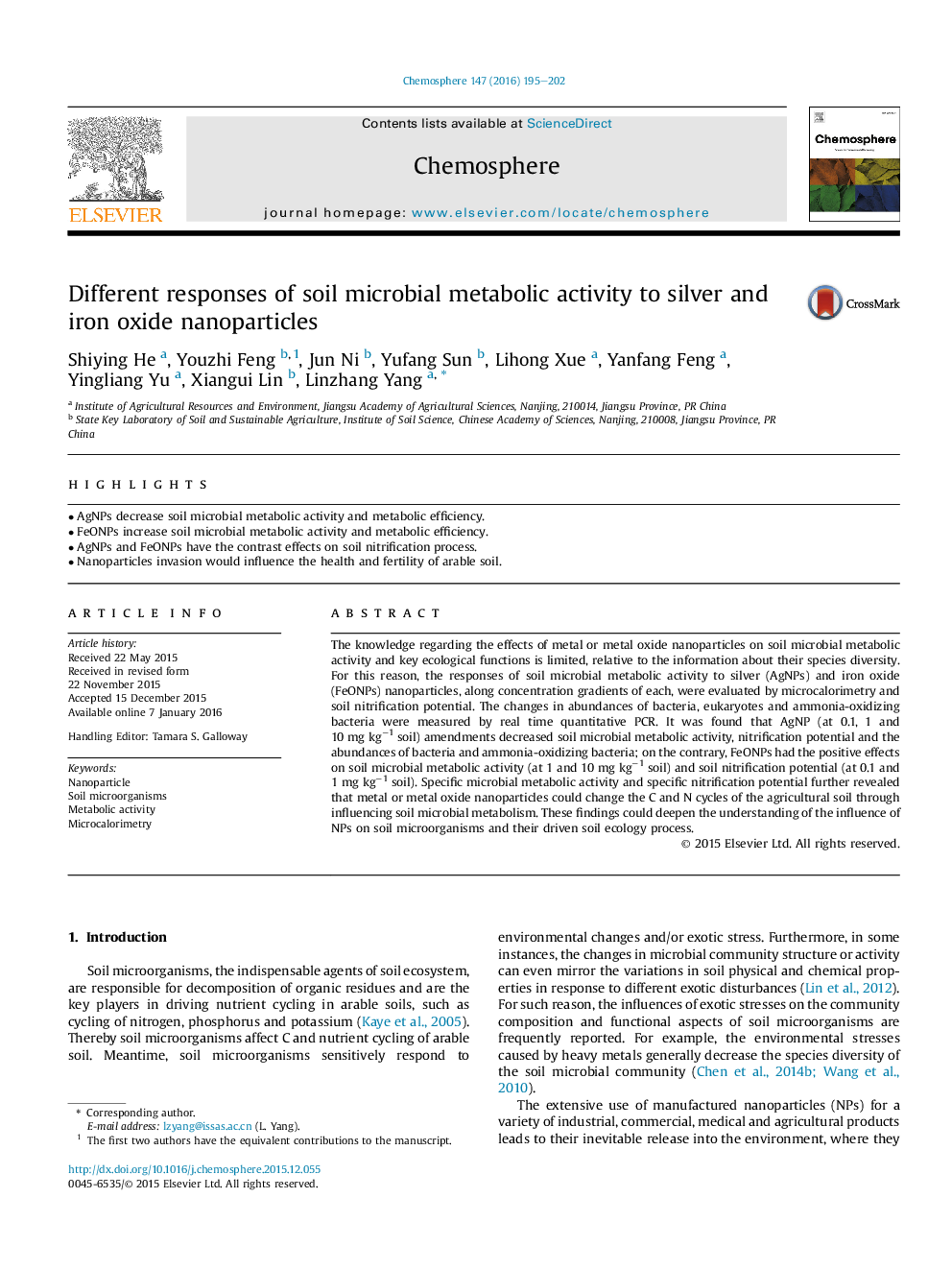| Article ID | Journal | Published Year | Pages | File Type |
|---|---|---|---|---|
| 4408042 | Chemosphere | 2016 | 8 Pages |
•AgNPs decrease soil microbial metabolic activity and metabolic efficiency.•FeONPs increase soil microbial metabolic activity and metabolic efficiency.•AgNPs and FeONPs have the contrast effects on soil nitrification process.•Nanoparticles invasion would influence the health and fertility of arable soil.
The knowledge regarding the effects of metal or metal oxide nanoparticles on soil microbial metabolic activity and key ecological functions is limited, relative to the information about their species diversity. For this reason, the responses of soil microbial metabolic activity to silver (AgNPs) and iron oxide (FeONPs) nanoparticles, along concentration gradients of each, were evaluated by microcalorimetry and soil nitrification potential. The changes in abundances of bacteria, eukaryotes and ammonia-oxidizing bacteria were measured by real time quantitative PCR. It was found that AgNP (at 0.1, 1 and 10 mg kg−1 soil) amendments decreased soil microbial metabolic activity, nitrification potential and the abundances of bacteria and ammonia-oxidizing bacteria; on the contrary, FeONPs had the positive effects on soil microbial metabolic activity (at 1 and 10 mg kg−1 soil) and soil nitrification potential (at 0.1 and 1 mg kg−1 soil). Specific microbial metabolic activity and specific nitrification potential further revealed that metal or metal oxide nanoparticles could change the C and N cycles of the agricultural soil through influencing soil microbial metabolism. These findings could deepen the understanding of the influence of NPs on soil microorganisms and their driven soil ecology process.
